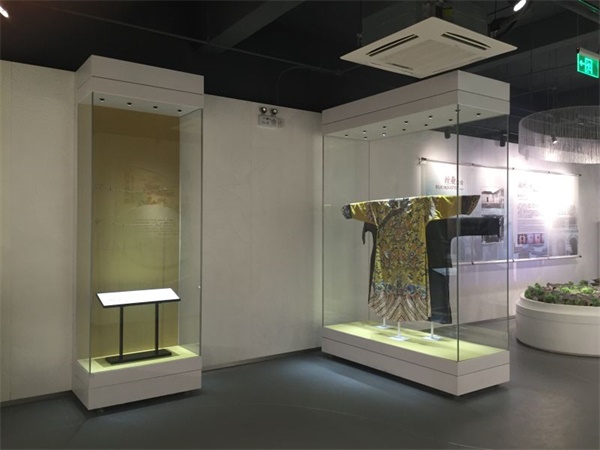发布日期:2022-01-21
展柜应该具有良好密封性,内部应当安装有温湿度自动测定仪器和控制湿度的设备。设备不准与展柜同体安装。
展柜控制湿度的第一种选择是安装去湿机。当湿度超过要求范围时,湿度控制仪能自动开启去湿机降低湿度并同时显示报警信号。
展柜控制湿度的第二种选择是放置吸湿缓冲材料。此选择要求在展柜下层箱体中留出足够空间用于放置吸湿缓冲材料,例如硅胶。吸湿缓冲材料在夏天潮湿气候下可吸收潮气,在冬天干燥气候下可放出水分保持展柜内湿度稳定。工作人员需要随时根据气候特点更换吸湿缓冲材料。展柜下层硅胶箱体应该和上层文物展出部分有足够气孔进行空气交换。在展柜下层预留吸湿缓冲材料箱体的目的是为了在更换硅胶时应该不影响展柜中展品,即不需要移动展品。
 The display cabinets should be well sealed and equipped with automatic measuring instruments for temperature and humidity and equipment for humidity control. The equipment is not allowed to be installed with the display cabinet.
The first choice for the display cabinet to control humidity is to install a dehumidifier. When the humidity exceeds the required range, the humidity controller can automatically turn on the dehumidifier to reduce the humidity and display the alarm signal at the same time.
The second option for the display cabinet to control humidity is to place a hygroscopic buffer material. This option requires that enough space be left in the lower compartment of the display cabinet to place hygroscopic buffers, such as silica gel. The moisture absorbent buffer material can absorb moisture in the humid climate in summer, and can release moisture in the dry climate in winter to keep the humidity in the display cabinet stable. Staff members are required to replace moisture absorbent buffers at any time in accordance with climate characteristics. The lower part of the cabinet should have enough air holes for air exchange with the upper part of the exhibition. The purpose of reserving the wet-absorbing buffer material box body at the lower level of the display cabinet is that when replacing the silicone gel, it should not affect the exhibits in the exhibition cabinet, that is, there is no need to move the exhibits.
The display cabinets should be well sealed and equipped with automatic measuring instruments for temperature and humidity and equipment for humidity control. The equipment is not allowed to be installed with the display cabinet.
The first choice for the display cabinet to control humidity is to install a dehumidifier. When the humidity exceeds the required range, the humidity controller can automatically turn on the dehumidifier to reduce the humidity and display the alarm signal at the same time.
The second option for the display cabinet to control humidity is to place a hygroscopic buffer material. This option requires that enough space be left in the lower compartment of the display cabinet to place hygroscopic buffers, such as silica gel. The moisture absorbent buffer material can absorb moisture in the humid climate in summer, and can release moisture in the dry climate in winter to keep the humidity in the display cabinet stable. Staff members are required to replace moisture absorbent buffers at any time in accordance with climate characteristics. The lower part of the cabinet should have enough air holes for air exchange with the upper part of the exhibition. The purpose of reserving the wet-absorbing buffer material box body at the lower level of the display cabinet is that when replacing the silicone gel, it should not affect the exhibits in the exhibition cabinet, that is, there is no need to move the exhibits.
